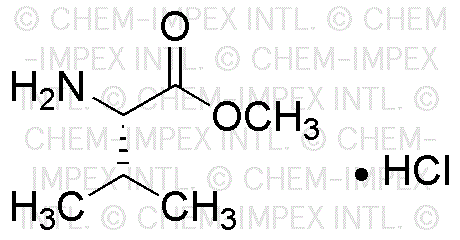L-Valine methyl ester hydrochloride is widely utilized in research focused on:
- Pharmaceutical Development: This compound serves as a building block in the synthesis of various pharmaceuticals, particularly in the development of amino acid derivatives that can enhance drug efficacy.
- Biochemical Research: It is commonly used in studies involving protein synthesis and metabolism, helping researchers understand the role of branched-chain amino acids in cellular functions.
- Nutrition Supplements: The compound is incorporated into dietary supplements aimed at athletes and bodybuilders, promoting muscle recovery and growth due to its role as an essential amino acid.
- Cosmetic Formulations: L-Valine methyl ester hydrochloride is used in skincare products for its moisturizing properties, contributing to improved skin texture and hydration.
- Food Industry: It acts as a flavor enhancer and is utilized in food formulations to improve taste profiles, particularly in protein-rich products.
General Information
Properties
Safety and Regulations
Applications
L-Valine methyl ester hydrochloride is widely utilized in research focused on:
- Pharmaceutical Development: This compound serves as a building block in the synthesis of various pharmaceuticals, particularly in the development of amino acid derivatives that can enhance drug efficacy.
- Biochemical Research: It is commonly used in studies involving protein synthesis and metabolism, helping researchers understand the role of branched-chain amino acids in cellular functions.
- Nutrition Supplements: The compound is incorporated into dietary supplements aimed at athletes and bodybuilders, promoting muscle recovery and growth due to its role as an essential amino acid.
- Cosmetic Formulations: L-Valine methyl ester hydrochloride is used in skincare products for its moisturizing properties, contributing to improved skin texture and hydration.
- Food Industry: It acts as a flavor enhancer and is utilized in food formulations to improve taste profiles, particularly in protein-rich products.
Documents
Safety Data Sheets (SDS)
The SDS provides comprehensive safety information on handling, storage, and disposal of the product.
Product Specification (PS)
The PS provides a comprehensive breakdown of the product’s properties, including chemical composition, physical state, purity, and storage requirements. It also details acceptable quality ranges and the product's intended applications.
Certificates of Analysis (COA)
Search for Certificates of Analysis (COA) by entering the products Lot Number. Lot and Batch Numbers can be found on a product’s label following the words ‘Lot’ or ‘Batch’.
*Catalog Number
*Lot Number
Certificates Of Origin (COO)
This COO confirms the country where the product was manufactured, and also details the materials and components used in it and whether it is derived from natural, synthetic, or other specific sources. This certificate may be required for customs, trade, and regulatory compliance.
*Catalog Number
*Lot Number
Safety Data Sheets (SDS)
The SDS provides comprehensive safety information on handling, storage, and disposal of the product.
DownloadProduct Specification (PS)
The PS provides a comprehensive breakdown of the product’s properties, including chemical composition, physical state, purity, and storage requirements. It also details acceptable quality ranges and the product's intended applications.
DownloadCertificates of Analysis (COA)
Search for Certificates of Analysis (COA) by entering the products Lot Number. Lot and Batch Numbers can be found on a product’s label following the words ‘Lot’ or ‘Batch’.
*Catalog Number
*Lot Number
Certificates Of Origin (COO)
This COO confirms the country where the product was manufactured, and also details the materials and components used in it and whether it is derived from natural, synthetic, or other specific sources. This certificate may be required for customs, trade, and regulatory compliance.


